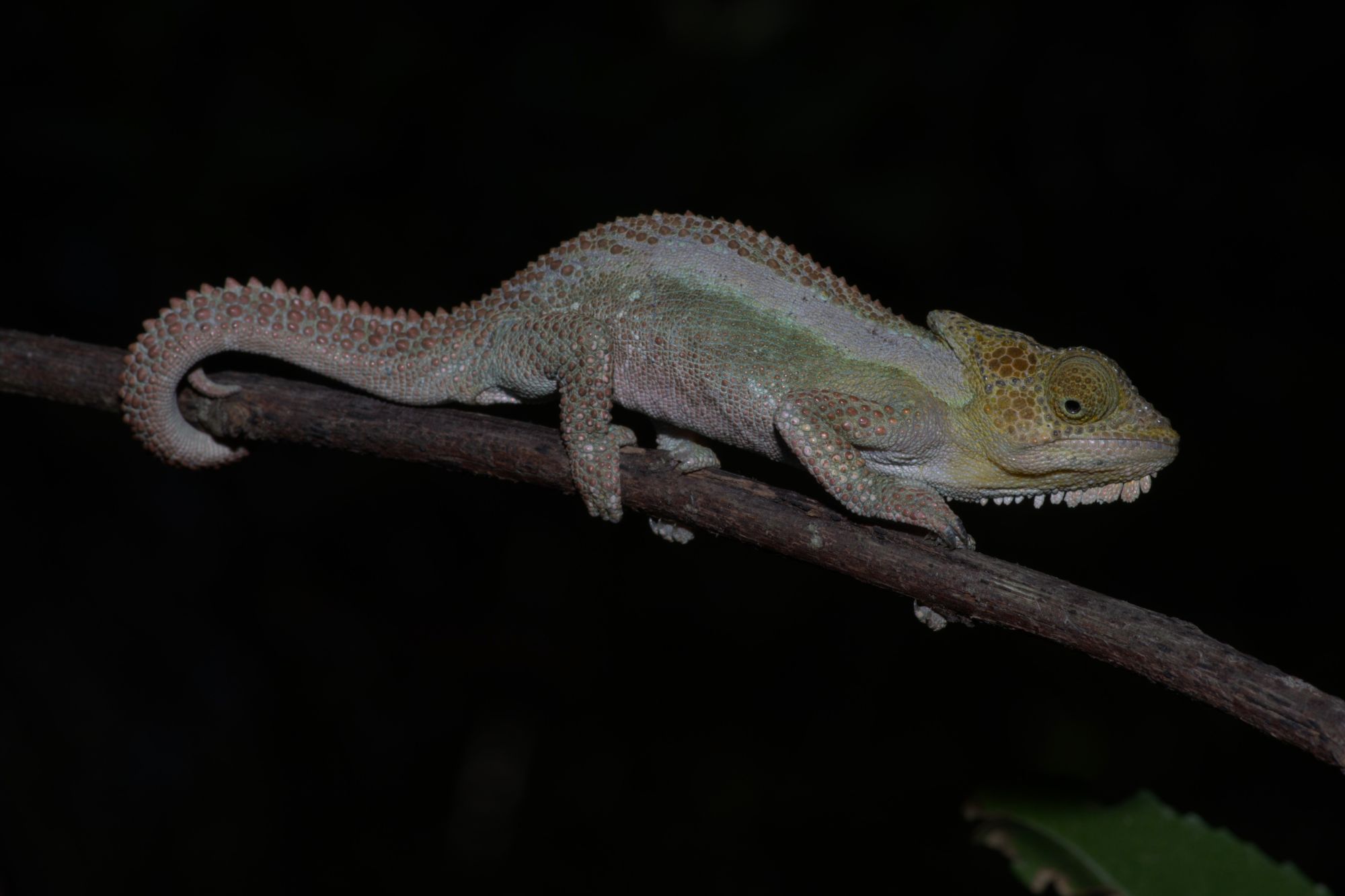
Now you see me, now you don’t: the hidden world of Dwarf Chameleons
The charismatic true chameleons belong to the family Chamaeleonidae and are found throughout much of Africa, Madagascar, southern Spain, southern India, Sri Lanka and the southern Arabian Peninsula. There are more than 160 species globally, which belong to eight genera. The South African endemic genus of Dwarf Chameleons Bradypodion (meaning “slow-footed” in Greek) hosts at least 20 species. Almost all species are endemic to South Africa (one just makes it into southern Mozambique) and many have relatively small distribution ranges.
Dwarf Chameleons are small-bodied, generally 4.5 to10 cm in length excluding the tail. The tail is as long or longer than the body and aids movement as it prehensile with the forest dwelling species have much longer tails. All Dwarf Chameleons are arboreal, meaning they live in trees and are heliothermic, which means that they are reliant on sun exposure to raise their body temperatures. Remarkably the eyes can be used independently of each other or both can be directed forwards for binocular vision. This aids in the long-range capture of insects through the rapid extension of the long sticky tongue, equal to the length of the chameleon’s body.
Most species also have a dorsal crest, which consist of a row of enlarged compressed scales that extend along the midline of the back and sometimes down the tail, giving the chameleon an almost dinosaur-like appearance. Body colouration is very varied in Dwarf Chameleons and in some species the adult males develop bright breeding colours. All Dwarf Chameleons can change colour very rapidly and become almost black when stressed and pale beige when sleeping. Changes in colour are very important for these slow-moving creatures to evade predators through camouflage and plays a role in communication. Many new species have been discovered in the past couple of decades including the very elusive Grootvadersbos Dwarf Chameleon (B. venustum) pictured below.

During the breeding season, adult males become brightly coloured and engage in displays that include head-bobbing and posturing with one of the forelimbs extended. These displays can escalate into vicious fights, which can include biting and may end up with the losing contestant being dislodged from his perch. Mating occurs in spring. In contrast with most other reptiles that lay eggs, Dwarf Chameleons are viviparous – giving birth to live young. Litters can range in size from 5 to 20 offspring and some females can produce 2 to 3 litters per season. Viviparity is likely an adaptation to the relatively cool climate of southern Africa in comparison to more tropical regions. Lower temperatures slow the development of eggs laid in the ground; when instead retained inside the body until birth, a female can actively sun bask to increase her body temperature and this aids development of the young.
From a conservation perspective, many Dwarf Chameleon species are listed as Threatened. This is a result of the naturally limited distribution range of some species, coupled with the loss of habitat and the potential negative effects of climate change. The Western Cape has three endemic Dwarf Chameleon species, namely the Swartberg Dwarf Chameleon (Bradypodion atromontanum), the Robertson Dwarf Chameleon (B. gutturale) and the Cape Dwarf Chameleon (B. pumilum), and one near endemic, the Knysna Dwarf Chameleon (B. damaranum). In contrast to many other Dwarf Chameleon species, these species all have an IUCN threat status of Least
Concern, except for the Cape Dwarf Chameleon, which is listed as Vulnerable. However, a novel threat may be emerging as Dwarf Chameleon species from elsewhere in the country are being introduced and successfully breeding in the Western Cape. The best thing for the maintenance of the rich Dwarf Chameleon fauna is to leave them where they have evolved and where they can carry out their useful ecological role as insect predators.
Further Reading:
Tolley KA & Burger M. 2012. Chameleons of Southern Africa. Penguin Random House. South Africa.





